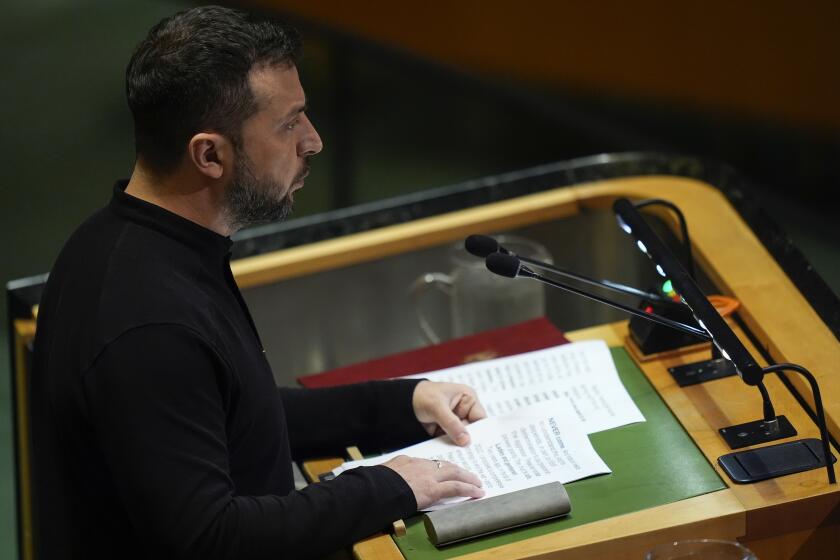Real-Time War, With Real-Time Confusion
The history of news is a story of technology, machines and devices moving information ever faster, until it is now instantaneous. You can’t get any faster than that.
We see and hear -- in “real time” -- the sights and sounds of Senate hearings, protest marches, space shuttle disasters and now, finally, wars.
In classical times, war news moved as fast -- and as far -- as couriers could run. In 1815, the London Rothschilds got the first news of Napoleon’s defeat at Waterloo by their private carrier pigeons. In 1865, word of Lincoln’s assassination took 12 days to reach Europe.
Today, you need not be a Rothschild to watch in your home a reporter atop a tank bumping across the desert; to see and hear another, on his belly, tell his camera operator to get a picture of the ridge line but not stand up because there is enemy fire; to follow bomb bursts and columns of flame as planes bomb Baghdad.
Are we wiser? Certainly we are more confused. Defense Secretary Donald Rumsfeld says we are not seeing the war, only slices of the war. The services may be regretting “embedding” 600 reporters with fighting units. From those slices of the overall picture came perceptions, by journalists and the public alike, of overextended supply lines and exhausted troops and those other truths and half-truths that made the Defense Department so defensive for two or three days.
Embedding reporters coincided with improved equipment. Live television used to require trucks the size of moving vans and cameras weighing hundreds of pounds, in place hours or even days before an anticipated event. Today, a videophone is the size of two briefcases; it can plug into a car’s cigarette lighter. A TV reporter can send pictures from anywhere. In Afghanistan, some did.
In the 1991 Gulf War, there was live coverage -- a general telling you what happened yesterday. But because the military didn’t trust the press -- a legacy of a troubled relationship in Vietnam -- it wouldn’t let reporters anywhere near the front. But the result of the generals’ own restrictions was that they ended up not getting due credit for their victories. So this time they tried embedding.
Embedding has posed problems for TV and print journalists alike. Alex Jones of the Shorenstein media center at Harvard compares the overall coverage with salted nuts: delicious but not nourishing.
The print press will always do better at summarizing, at context, at separating wheat from chaff. The special strength of television is not in moving information but in transmitting experience. During the sandstorms, writers mocked picture after picture, on channel after channel, of shadowy figures in monotonous, unrelieved brown. They called it repetitious, no news. For the Pentagon, it explained better than any briefing officer why the advance had slowed. Viewers could all but feel the sand in their ears and sense -- a little bit -- what it was like to be there.
That, then, is the future. TV reporters in battle zones will show what they can of what is going on. It will not “make sense” in the way that a report professionally organized and edited makes sense, in any medium.
As more than four-fifths of the nation learns about the war from television, newspapers and the military alike will have to accept it as fact. Equipment will only get better and the public will never again sit still for getting news of its wars from a general at a blackboard telling them what happened yesterday.
Real time. Live with it.
More to Read
Sign up for Essential California
The most important California stories and recommendations in your inbox every morning.
You may occasionally receive promotional content from the Los Angeles Times.










